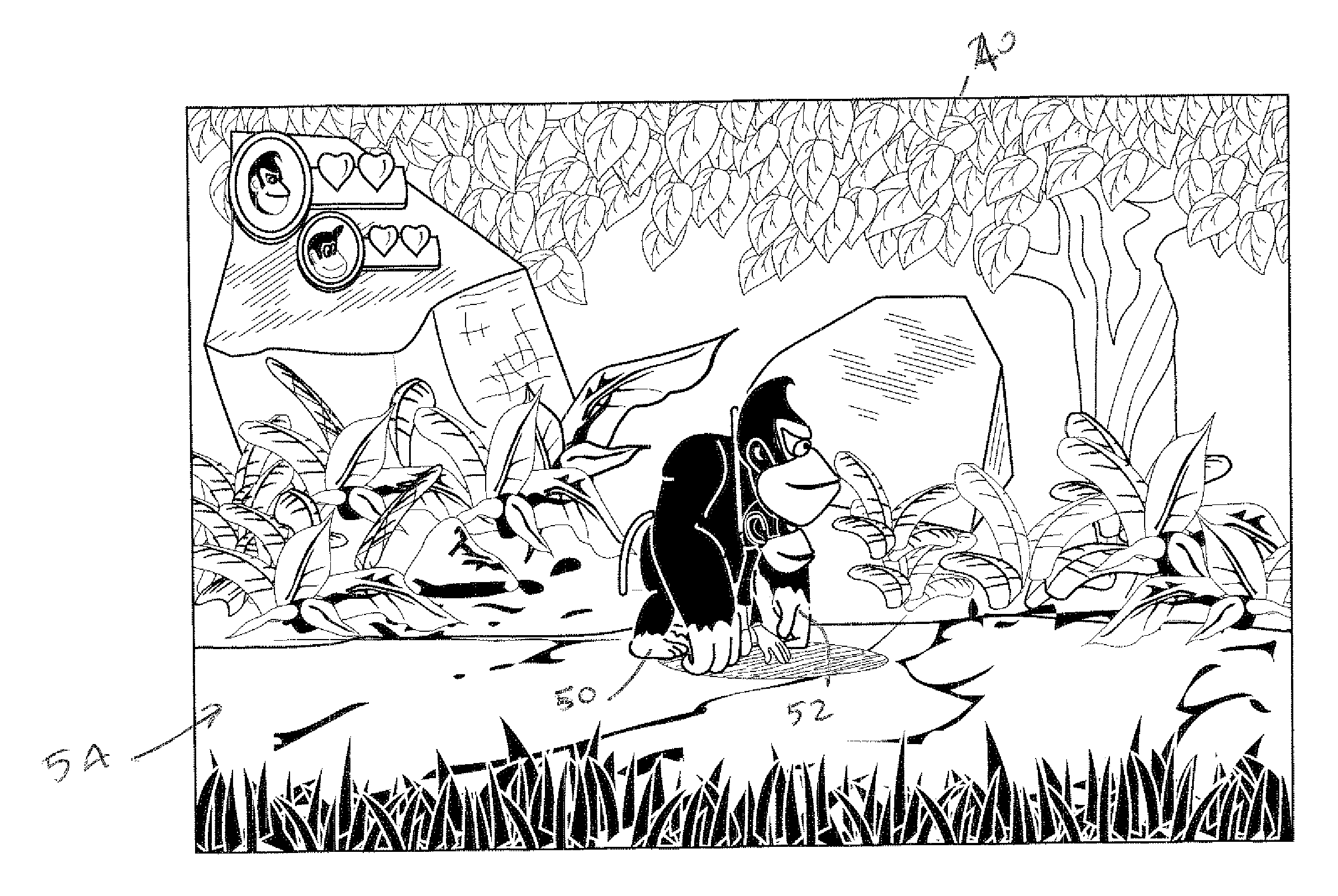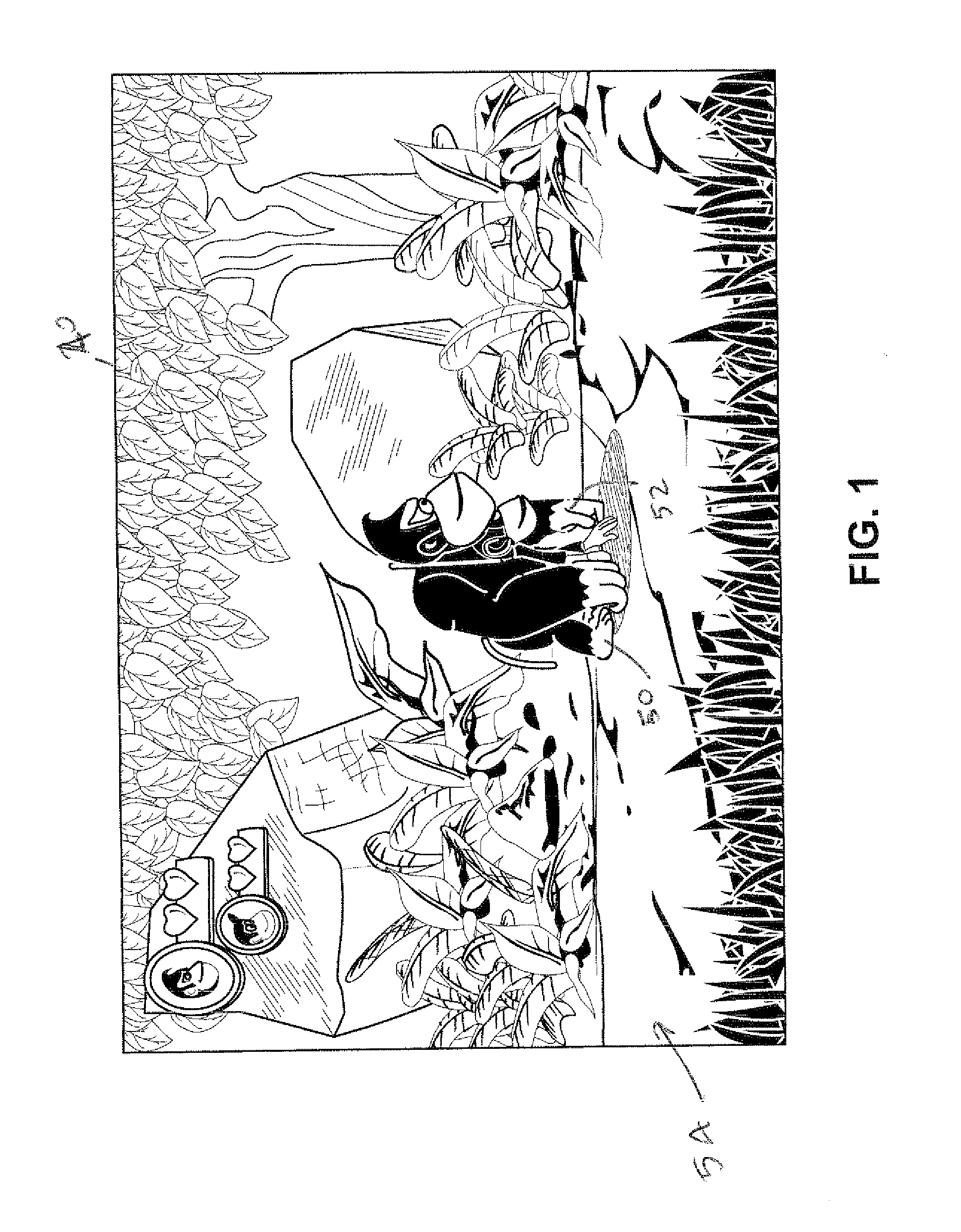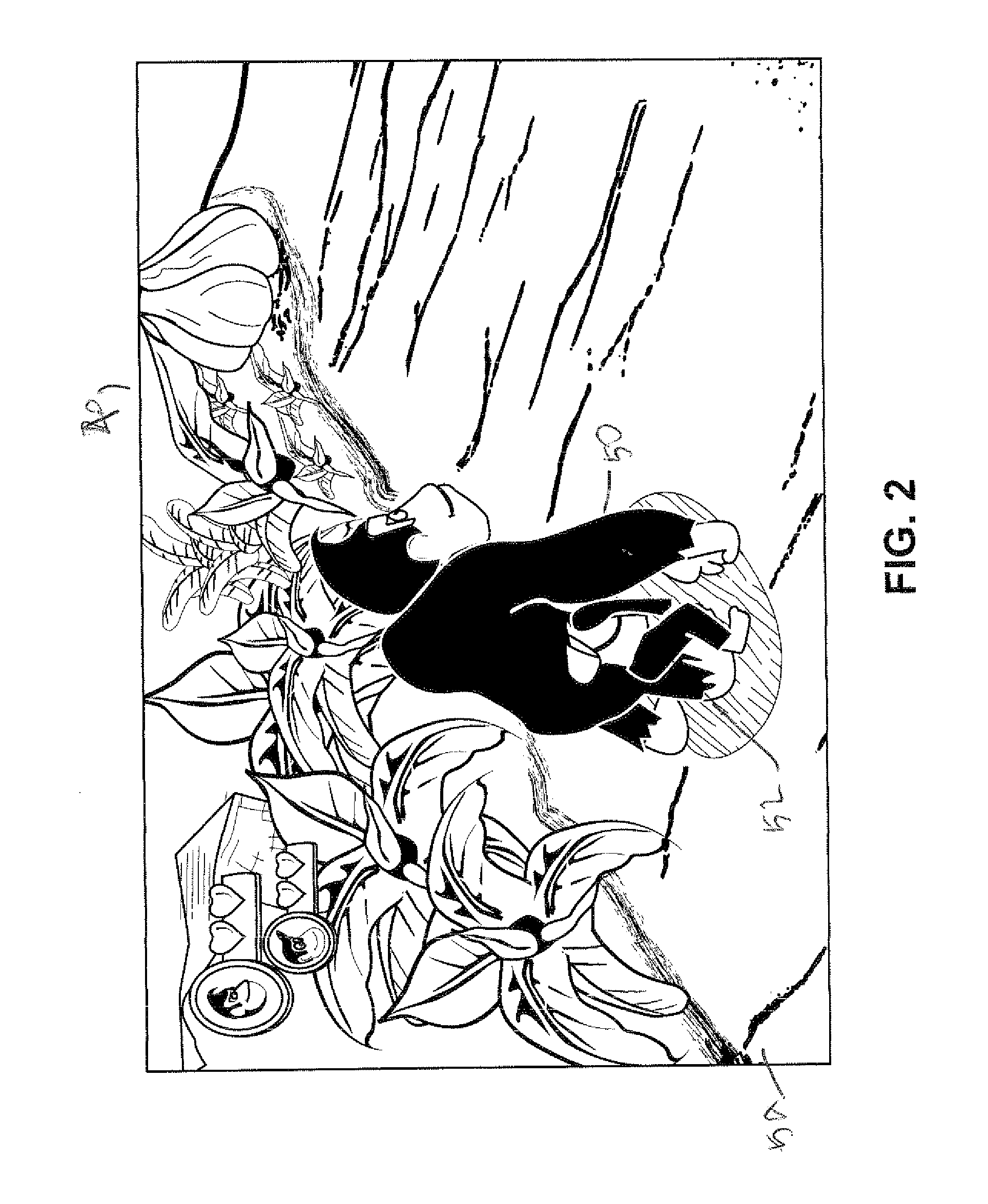2d imposters for simplifying processing of plural animation objects in computer graphics generation
a computer graphics and object technology, applied in the field of computer graphics and animation, can solve the problems of increasing hardware and processing complexity, difficult to distinguish the real thing from the simulation, and much more immersive, and achieve the effect of reducing processing complexity and memory loading and freeing up resources
- Summary
- Abstract
- Description
- Claims
- Application Information
AI Technical Summary
Benefits of technology
Problems solved by technology
Method used
Image
Examples
Embodiment Construction
[0024]FIG. 1 shows an example image 40 produced by a graphics and animation system 1. Two animated characters (in this case a large monkey 50 (“Donkey Kong”) and a small monkey 52 (“Diddy Kong”) move through a three-dimensional world 54. In one example implementation, animated character 50 can be controlled by one game player input, and animated character 52 can be controlled by another game player input. When these two animated characters 50, 52 are controlled begin moving in tandem, they have substantially the same 3D coordinates in three dimensional space and can interfere with one another. If they were in the real world, however, the two characters 50, 52 could never occupy exactly the same space in three dimensions but rather one might stand or walk right next to the other. Since it may not be possible in a simple multiplayer gaming environment for game players to control or worry about the depths (z) of their respective characters and in any event expect system 1 to provide ph...
PUM
 Login to View More
Login to View More Abstract
Description
Claims
Application Information
 Login to View More
Login to View More - R&D
- Intellectual Property
- Life Sciences
- Materials
- Tech Scout
- Unparalleled Data Quality
- Higher Quality Content
- 60% Fewer Hallucinations
Browse by: Latest US Patents, China's latest patents, Technical Efficacy Thesaurus, Application Domain, Technology Topic, Popular Technical Reports.
© 2025 PatSnap. All rights reserved.Legal|Privacy policy|Modern Slavery Act Transparency Statement|Sitemap|About US| Contact US: help@patsnap.com



